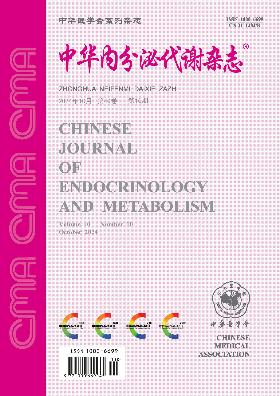利用代谢相关因素构建新疆哈萨克族人群心血管疾病风险预测模型
Q4 Medicine
引用次数: 1
摘要
目的构建并证实新疆哈萨克族人群心血管疾病(CVD)合并代谢综合征(MS)风险及其影响因素的预测模型。方法从2010年到2012年,共对2286名哈萨克人进行了为期5年的基线调查。他们是在新疆伊犁市新源县招募的。CVD病例分别于2013年、2016年和2017年通过当地医院的医疗记录确定。在基线时对706名MS患者进行了因素分析,并从18项医学检查指标中提取主要因素、年龄和性别,以构建CVD风险的预测模型。在排除基线时患有心血管疾病且数据不完整的受试者后,2007年被用作内部验证,哈拉布拉镇的219名哈萨克人被用作外部验证。Logistic回归判别法用于内部验证和外部验证,以及计算每个参与者和受试者的CVD概率操作特征曲线。结果哈萨克族MS患病率为30.88%,从哈萨克族MS人群中提取了7个主要因素,即肥胖因素、血脂血糖因素、肝功能因素、血脂因素、肾代谢因素、血压因素和肝酶因素。在内部验证中预测CVD的曲线下面积(AUC)为0.773(95%CI 0.754-0.792)。在外部验证中,结论从哈萨克族多发性硬化症患者中提取7个主要因素构建的心血管疾病风险预测模型具有较高的验证效率,可用于新疆哈萨克族人群心血管疾病的风险评估。关键词:代谢综合征;因子分析;心血管疾病;风险预测模型;哈萨克语本文章由计算机程序翻译,如有差异,请以英文原文为准。
Using metabolism related factors constructing a predictive model for the risk of cardiovascular diseases in Xinjiang Kazakh population
Objective
To construct and confirm a predictive model for the risks of cardiovascular diseases (CVD) with metabolic syndrome (MS) and its factors in Xinjiang Kazakh population.
Methods
A total of 2 286 Kazakh individuals were followed for 5 years from 2010 to 2012 as baseline survey. They were recruited in Xinyuan county, Yili city, Xinjiang. CVD cases were identified via medical records of the local hospitals in 2013, 2016 and 2017, respectively. Factor analysis was performed on 706 MS patients at baseline, and main factors, age, and sex were extracted from 18 medical examination indexs to construct a predictive model of CVD risk. After excluding the subjects with CVD at baseline and incomplete data, 2007 were used as internal validation, and 219 Kazakhs in Halabra Township were used as external validation. Logistic regression discriminations were used for internal validation and external validation, as well as to calculate the probability of CVD for each participant and receiver operating characteristic curves.
Results
The prevalence of MS in Kazakh was 30.88%. Seven main factors were extracted from the Kazakh MS population, namely obesity factor, blood lipid and blood glucose factor, liver function factor, blood lipid factor, renal metabolic factor, blood pressure factor, and liver enzyme factor. The area under the curve (AUC) for predicting CVD in the internal validation was 0.773 (95%CI 0.754-0.792). In the external validation, the AUC for predicting CVD was 0.858 (95%CI 0.805-0.901).
Conclusions
The CVD risk prediction model constructed by 7 main factors extracted from Kazakh MS patients has high validation efficiency and can be used for risk assessment of CVD in Xinjiang Kazakh population.
Key words:
Metabolic syndrome; Factor analysis; Cardiovascular diseases; Risk predictive model; Kazakh
求助全文
通过发布文献求助,成功后即可免费获取论文全文。
去求助
来源期刊

中华内分泌代谢杂志
Medicine-Endocrinology, Diabetes and Metabolism
CiteScore
0.60
自引率
0.00%
发文量
7243
期刊介绍:
The Chinese Journal of Endocrinology and Metabolism was founded in July 1985. It is a senior academic journal in the field of endocrinology and metabolism sponsored by the Chinese Medical Association. The journal aims to be the "Chinese broadcaster of new knowledge on endocrinology and metabolism worldwide". It reports leading scientific research results and clinical diagnosis and treatment experience in endocrinology and metabolism and related fields, as well as basic theoretical research that has a guiding role in endocrinology and metabolism clinics and is closely integrated with clinics. The journal is a core journal of Chinese science and technology (a statistical source journal of Chinese science and technology papers), and is included in Chinese and foreign statistical source journal databases such as the Chinese Science and Technology Papers and Citation Database, Chemical Abstracts, and Scopus.
 求助内容:
求助内容: 应助结果提醒方式:
应助结果提醒方式:


